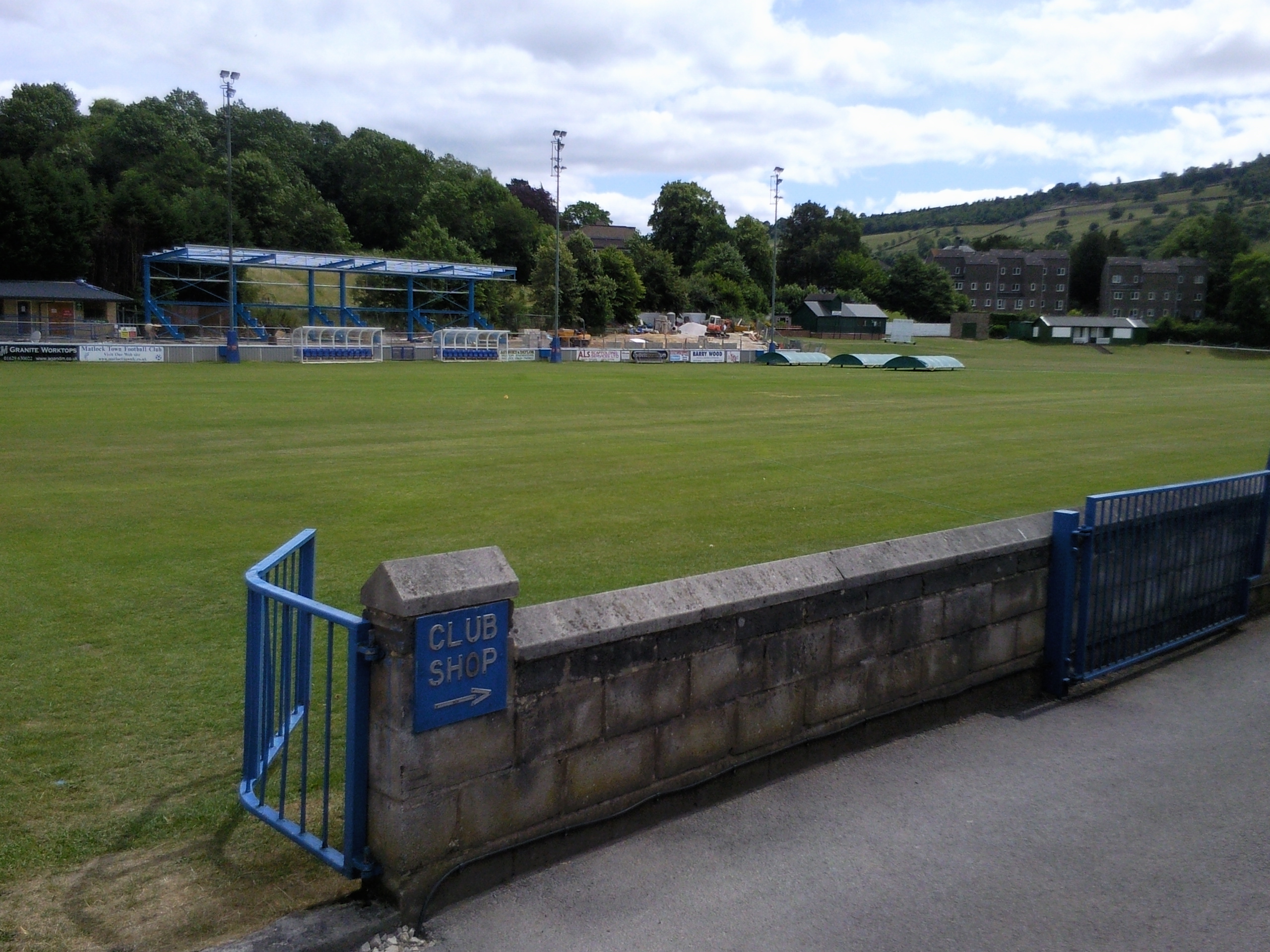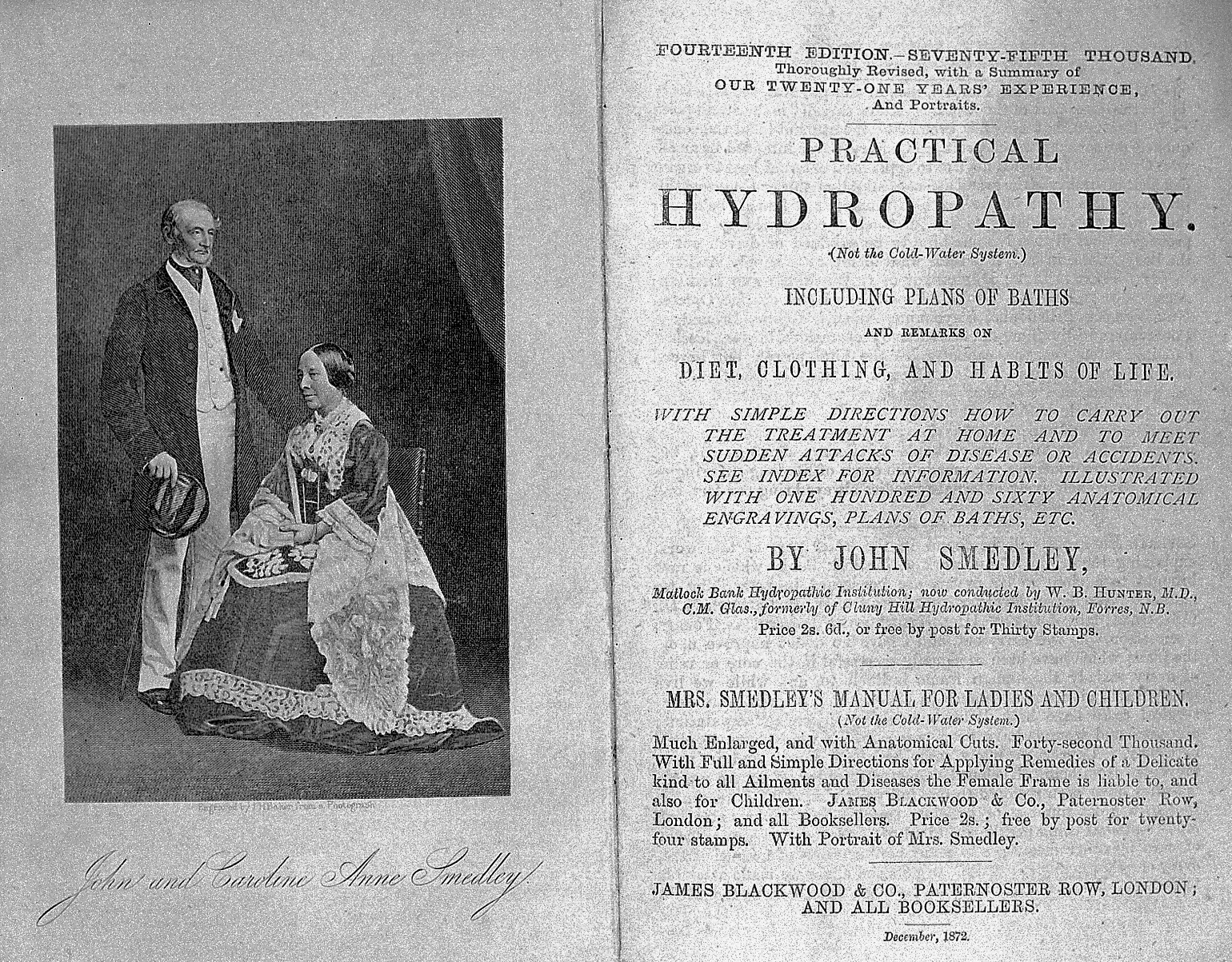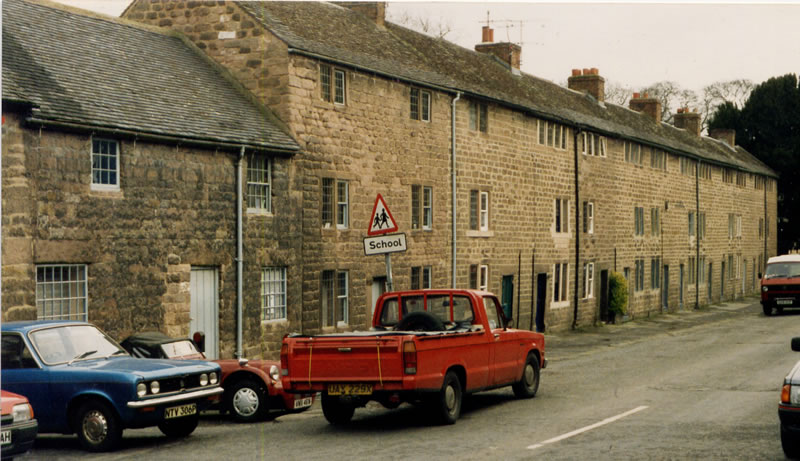|
Riber
Riber is a Hamlet (place), hamlet in the civil parish of Matlock Town (parish), Matlock Town, in the Derbyshire Dales district, in the county of Derbyshire, England. It is situated high on a hill overlooking the town and also Matlock Bath, near to the residential Starkholmes area. Riber is famous for its Riber Castle, castle, the dilapidated shell of a Victorian era, Victorian folly built in a semi-classic, semi-Gothic Revival architecture, Gothic style by the wealthy local industrialist John Smedley (industrialist), John Smedley,About Derbyshire – Riber and Starkholmes Retrieved 2014-06-29 which is currently in the process of being converted into flats with 20 new houses to be built in the grounds. From the 1960s to September 2000 the castle ground ... [...More Info...] [...Related Items...] OR: [Wikipedia] [Google] [Baidu] |
Riber Castle
Riber Castle is a 19th-century Grade II listed country house in the hamlet of Riber on a hill overlooking Matlock, Derbyshire. It is built of gritstone from a local quarry which was pulled up the hill by a series of pulleys. History Known locally as "Smedley's Folly" because of the difficulty of getting water to the hill summit, it was built by the industrialist John Smedley in 1862 as his private home. His wife lived in it until her death in 1892. After the death of Smedley's wife, the castle became a boys' prep school until this became financially unsustainable in the 1930s. The architectural historian John Summerson attended the school in the early 20th century. While he enjoyed his time at the school, the building's architecture had lesser appeal; he described the castle as "an object of indecipherable bastardy – a true monster". With the coming of World War II the Ministry of Defence used the site for food storage. The MoD left following the war and the castle remained u ... [...More Info...] [...Related Items...] OR: [Wikipedia] [Google] [Baidu] |
Matlock Bath
Matlock Bath is a village and civil parish in Derbyshire, England. It lies in the Peak District, south of Matlock on the main A6 road, and approximately halfway between Buxton and Derby. The population of the civil parish at the 2011 census was 753. Originally built at the head of a dead-end dirt road running along the valley of the River Derwent from Matlock, the settlement developed in the 19th century as residential and a spa town which remains a tourist destination. The steep hillside restricts development with most buildings on one side of the valley and only footbridges across the river. The road was upgraded, becoming a through-way, now designated A6, avoiding the previous coaching road approach to Matlock from Cromford over very steep hills near to the Riber plateau area. Matlock Dale is a hamlet about north of the village, and the term also refers to this stretch of the river valley. History In 1698, warm springs were discovered and a bath house was built. As the ... [...More Info...] [...Related Items...] OR: [Wikipedia] [Google] [Baidu] |
Matlock, Derbyshire
Matlock is the county town of Derbyshire, England. It is situated in the south-eastern part of the Peak District, with the National Park directly to the west. The town is twinned with the French town of Eaubonne. The former spa resort of Matlock Bath lies immediately south of the town on the A6. The civil parish of Matlock Town had a population in the 2011 UK census of 9,543. Matlock is nine miles (14 km) south-west of Chesterfield and in easy reach of the cities of Derby (19 miles), Sheffield (20 miles) and Nottingham (29 miles); the Greater Manchester conurbation is 30 miles away. Matlock is within the Derbyshire Dales district, which also includes the towns of Bakewell and Ashbourne, as well as Wirksworth. The headquarters of Derbyshire County Council are in the town. History The name Matlock derives from the Old English ''mæthel'' (or ''mæðel''), meaning assembly or speech, and ''āc'', meaning oak tree; thus Matlock means 'moot-oak', an oak tree where mee ... [...More Info...] [...Related Items...] OR: [Wikipedia] [Google] [Baidu] |
Matlock Town (parish)
Matlock Town Football Club is a football club based in Matlock, Derbyshire, England. Nicknamed 'the Gladiators', they are currently members of the and play at Causeway Lane. History The club was established in 1878 as Matlock Football Club.History boys – Matlock Town and their run to FA Cup Third Round in 1977 Matlock Town F.C. They began entering the in 1885, but did not win a match in the competition until 1890. In that year the club were founder members of the Derbyshire Senior League and went on to win the title in the league's inaugural season. [...More Info...] [...Related Items...] OR: [Wikipedia] [Google] [Baidu] |
John Smedley (industrialist)
John Smedley is the name of four generations of owners of Lea Mills, near Matlock, Derbyshire. The most famous of these was John Smedley (1803–1874), born at Wirksworth, Derbyshire. Lea Mills Lea Mills was founded in 1784 by Peter Nightingale (a relation of Florence Nightingale and former accountant to Richard Arkwright) and John Smedley (father of the better-known son of the same name). It was set up on a hilly site straddling a brook at Lea Bridge, just outside Matlock. The brook was used to both clean yarn and power machinery. The mill specialised in the production of muslin and spinning cotton to send out to local cottages with hand frame looms. Towards the end of the 18th century, the company had extended its activities to include knitting and hosiery manufacture – said to be the origin of Long Johns. By this time, John Smedley was running the business alone, although the Nightingale family retained an interest in the property. As Lea Mills remains open and an operati ... [...More Info...] [...Related Items...] OR: [Wikipedia] [Google] [Baidu] |
Tansley
Tansley is a village on the southern edge of the Derbyshire Peak District, two miles east of Matlock. History Tansley is recorded in the Domesday Book as Taneslege, and its name comes from the combination of the Old English elements ''tān'' and ''lēah''. ''Lēah'' has been translated as 'woodland clearing', but the ''tān'' element is contested. It may mean 'branch', perhaps used of 'a valley branching off from the main valley'. However, it has also been translated as a masculine Anglo-Saxon personal name, that is otherwise unrecorded. Other suggestions have been 'sprout, shoot', thus translating the name as 'wood or clearing from which shoots were obtained'. Tansley grew during the Industrial Revolution, its main industry being the quarrying of millstone grit (for making mill-stones, now adopted as the symbol of the Peak District National Park). A copious amount of water runs off Tansley moor above the village, eventually running into Bentley Brook, a tributary of the Derwe ... [...More Info...] [...Related Items...] OR: [Wikipedia] [Google] [Baidu] |
Hamlets In Derbyshire
A hamlet is a human settlement that is smaller than a town or village. Its size relative to a parish can depend on the administration and region. A hamlet may be considered to be a smaller settlement or subdivision or satellite entity to a larger settlement. The word and concept of a hamlet has roots in the Anglo-Norman settlement of England, where the old French ' came to apply to small human settlements. Etymology The word comes from Anglo-Norman ', corresponding to Old French ', the diminutive of Old French ' meaning a little village. This, in turn, is a diminutive of Old French ', possibly borrowed from (West Germanic) Franconian languages. Compare with modern French ', Dutch ', Frisian ', German ', Old English ' and Modern English ''home''. By country Afghanistan In Afghanistan, the counterpart of the hamlet is the Qila, qala (Dari language, Dari: قلعه, Pashto: کلي) meaning "fort" or "hamlet". The Afghan ''qala'' is a fortified group of houses, gener ... [...More Info...] [...Related Items...] OR: [Wikipedia] [Google] [Baidu] |
Matlock Mercury
The ''Matlock Mercury'' is a weekly newspaper published on a Thursday in the United Kingdom which serves Matlock, Darley Dale, Wirksworth, Bakewell and smaller villages in the Derbyshire Dales area of Derbyshire. The ''Matlock Mercury'' began life in the late 1940s as ''Coming Events'', an entertainments guide published by Ella Smith from her house on Bakewell Road, Matlock which remained as the newspaper's home until October 2000 when a new office opened on Firs Parade in the centre of the town. The name ''Matlock Mercury'' was adopted in the mid-1950s. Much of the newspaper's archive was destroyed when four feet of water struck during flooding in 1965. The printing works, which shared the same building until 1996, were also badly damaged. Ella Smith sold the Mercury to John Uprichard a successful journalist and TV news reporter in the mid-1970s. Uprichard modernised and updated the facilities and printing works to provide a modern newspaper aided by his wife Beryl Uprichard. T ... [...More Info...] [...Related Items...] OR: [Wikipedia] [Google] [Baidu] |
Phantom Cat
Phantom cats, also known as Alien Big Cats (ABCs), are large felids such as leopards, jaguars and cougars which allegedly appear in regions outside their indigenous range. Sightings, tracks and predation have been reported in a number of countries and states including Australia, Canada, China, Denmark, Finland, France, Germany, Great Britain, Hawaii, Ireland, India, Italy, Luxembourg, Netherlands, New Zealand, Spain, Switzerland, and the United States. Australia Sightings of exotic big cats in Australia began more than 100 years ago. The New South Wales State Government reported in 2003 that "more likely than not" there was a number of exotic big cats living deep in the bushlands near Sydney. Blue Mountains Panther The ''Blue Mountains Panther'' is a phantom cat reported in sightings in the Blue Mountains area, west of Sydney for over a century. Speculation about the Blue Mountains Panther includes the theory that it descended from either circus or zoo escapees, or is ... [...More Info...] [...Related Items...] OR: [Wikipedia] [Google] [Baidu] |
Lumsdale Valley
Lumsdale Valley is a steep-sided wooded gorge in the Peak District near Matlock, Derbyshire, in England. It is the location of a series of historic water-powered mills. Lumsdale Valley site is a protected Scheduled Monument, currently owned and preserved by the Arkwright Society (leased to the society since the 1976 and then bequeathed to it in 1996 by Marjorie Mills). It is within the Lumsdale Conservation Area, set up in 1980. The monument consists of a series of historic water-powered mills and other fragile industrial archaeological structures and remains. The privately owned central gorge area of the monument is no longer open to general public access. The name Lumsdale is believed to mean either 'valley of chimneys' (from the Scottish word ''lum'' meaning chimney and reflecting the area's industrial heritage) or 'valley of water pools' (from the English name ''lumb'' meaning a place with a pool). Water features Bentley Brook runs through Lumsdale Valley into the Rive ... [...More Info...] [...Related Items...] OR: [Wikipedia] [Google] [Baidu] |
A6 Road (Great Britain)
The A6 is one of the main north–south roads in England. It runs from Luton in Bedfordshire to Carlisle in Cumbria, although it formerly started at a junction with the A1 at Barnet. It is the fourth longest numbered road in Britain; only the A1, A38 and A30 are longer. Running north-west from Luton, the road passes through Bedford, bypasses Rushden, Kettering and Market Harborough, continues through Leicester, Loughborough, Derby and Matlock before passing through the Peak District to Bakewell, Buxton, Stockport, Manchester, Salford, Pendleton, Irlams o' th' Height, Pendlebury, Swinton, Wardley, Linnyshaw, Walkden, Little Hulton, Westhoughton, Chorley, Preston, Lancaster, Kendal and Penrith before reaching Carlisle. South of Derby, the road is paralleled by the M1 motorway; between Manchester and Preston, the M6 and M61 motorways approximate its course; and from Preston to its northern terminus in Carlisle, it is paralleled by the M6 only. Between Der ... [...More Info...] [...Related Items...] OR: [Wikipedia] [Google] [Baidu] |
Cromford
Cromford is a village and civil parish in Derbyshire, England, in the valley of the River Derwent between Wirksworth and Matlock. It is north of Derby, south of Matlock and south of Matlock Bath. It is first mentioned in the 11th-century Domesday Book as ''Crumforde'', a berewick (supporting farm) of Wirksworth, and this remained the case throughout the Middle Ages. The population at the 2011 Census was 1,433. It is principally known for its historical connection with Richard Arkwright and the nearby Cromford Mill, which he built outside the village in 1771. Cromford is in the Derwent Valley Mills World Heritage Site. The Cromford mill complex, owned and being restored by the Arkwright Society, was declared by Historic England as "one of the country’s 100 irreplaceable sites". It is also the centrepiece of the Derwent Valley Mills UNESCO World Heritage Site. In 2018, the ''Cromford Mills Creative Cluster and World Heritage Site Gateway Project'' was listed as a fina ... [...More Info...] [...Related Items...] OR: [Wikipedia] [Google] [Baidu] |







